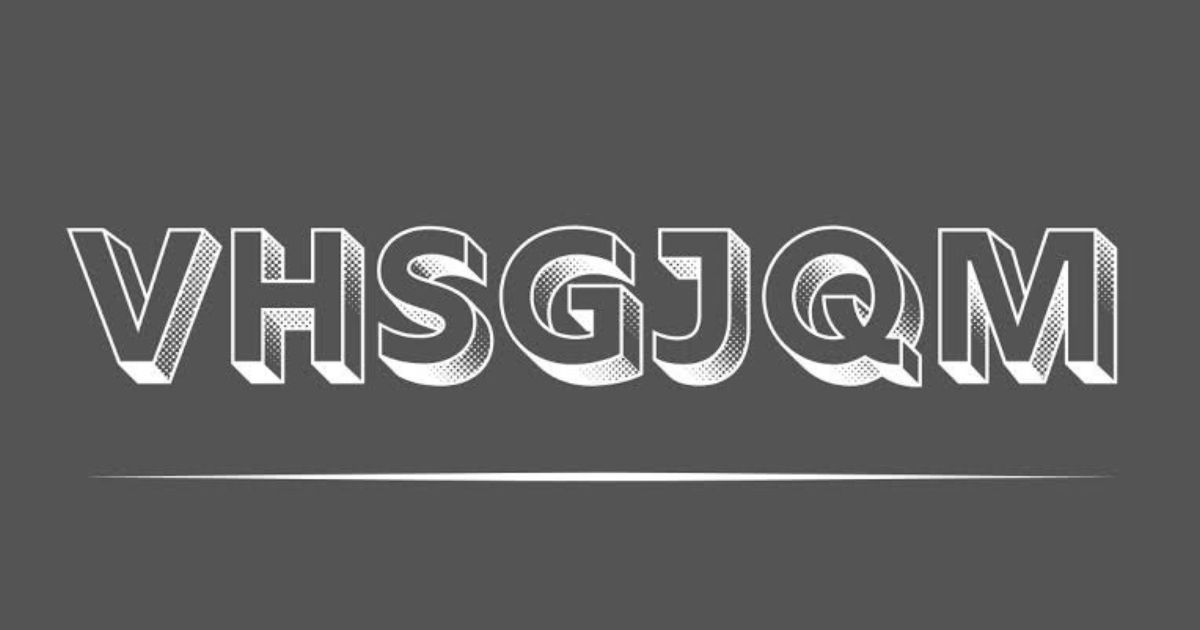Introduction
In today’s rapidly evolving technological landscape, unique identifiers play a pivotal role in ensuring data integrity, security, and efficient operations. One such identifier that has garnered attention across various industries is VHSGJQM. While it may appear as a random string of characters, VHSGJQM embodies a comprehensive framework that integrates advanced technologies with forward-thinking methodologies. This article delves deep into the concept of VHSGJQM, exploring its origins, applications, benefits, challenges, and future prospects.
What is VHSGJQM?
VHSGJQM is an acronym representing a strategic framework designed to enhance efficiency, sustainability, human resources, strategy, growth, job performance, and quality management. Initially emerging as a generalized concept, VHSGJQM has since been adapted to address the unique needs of different industries, including manufacturing, healthcare, energy production, and more.
At its core, VHSGJQM combines innovative thinking with practical methodologies to address various challenges. It serves as a structured approach or framework used for enhancing data integrity, optimizing workflows, and improving strategic decision-making.
Key Components of VHSGJQM
- Efficiency Optimization: Focusing on maximizing output while minimizing resource usage and waste.
- Sustainability: Promoting eco-friendly practices and reducing environmental impact.
- Human Resources: Enhancing employee performance and satisfaction through strategic HR practices.
- Strategic Planning: Developing long-term goals and aligning resources to achieve them.
- Growth: Facilitating business expansion and market development.
- Job Performance: Improving individual and team productivity.
- Quality Management: Ensuring products and services meet consistent standards.
Applications of VHSGJQM
1. Manufacturing and Production
In the manufacturing sector, VHSGJQM principles are applied to optimize production lines, improve safety protocols, and enhance overall efficiency. By tailoring the framework to specific industry requirements, businesses can achieve greater efficiency, cost savings, and performance improvements.
2. Healthcare
Healthcare organizations utilize VHSGJQM to streamline resource management, improve patient care outcomes, and integrate medical technologies effectively. The framework aids in reducing errors, enhancing patient satisfaction, and optimizing operational workflows.
3. Energy Sector
In energy production, VHSGJQM supports the adoption of sustainable practices, efficient resource utilization, and the integration of renewable energy sources. It assists in balancing energy demands with environmental responsibilities.
4. Information Technology
IT companies implement VHSGJQM to manage software development processes, ensure data security, and maintain system integrity. The framework’s emphasis on quality management and strategic planning aligns well with the dynamic nature of the tech industry.
5. Business Strategy and Optimization
Organizations across various sectors adopt VHSGJQM to assess risks, allocate resources efficiently, and optimize their strategic operations. It provides a structured approach to analyzing challenges and identifying solutions.
Benefits of Implementing VHSGJQM
- Enhanced Productivity: Automation and streamlined processes allow employees to focus on strategic tasks, increasing overall productivity.
- Cost Reduction: Reducing errors and waste lowers operational costs, contributing to better financial performance.
- Sustainable Growth: Eco-friendly practices ensure long-term viability and competitiveness in the market.
- Improved Quality: Consistent quality management leads to higher customer satisfaction and loyalty.
- Strategic Alignment: Aligning operations with strategic goals ensures cohesive progress across the organization.
Challenges in Implementing VHSGJQM
- Resistance to Change: Employees may be hesitant to adopt new processes, requiring effective change management strategies.
- High Initial Costs: Implementing new systems and training programs can be financially demanding.
- Regulatory Compliance: Ensuring that new practices meet industry regulations and standards is crucial.
- Complex Integration: Integrating VHSGJQM with existing systems may pose technical challenges.
Future Prospects of VHSGJQM
The future of VHSGJQM lies in the integration of artificial intelligence and machine learning. These technologies enable real-time analysis, optimizing efficiency and sustainability further. Innovations in renewable energy and eco-friendly materials will also enhance its impact on industries.
Collaborations between research institutions and businesses will drive breakthroughs, positioning this framework as a vital strategy for addressing global challenges.
Conclusion
VHSGJQM represents a comprehensive framework that addresses the multifaceted needs of modern industries. By focusing on efficiency, sustainability, human resources, strategic planning, growth, job performance, and quality management, it offers a holistic approach to organizational development. While challenges exist in its implementation, the long-term benefits of adopting VHSGJQM make it a valuable asset for businesses aiming for sustainable growth and competitive advantage.
